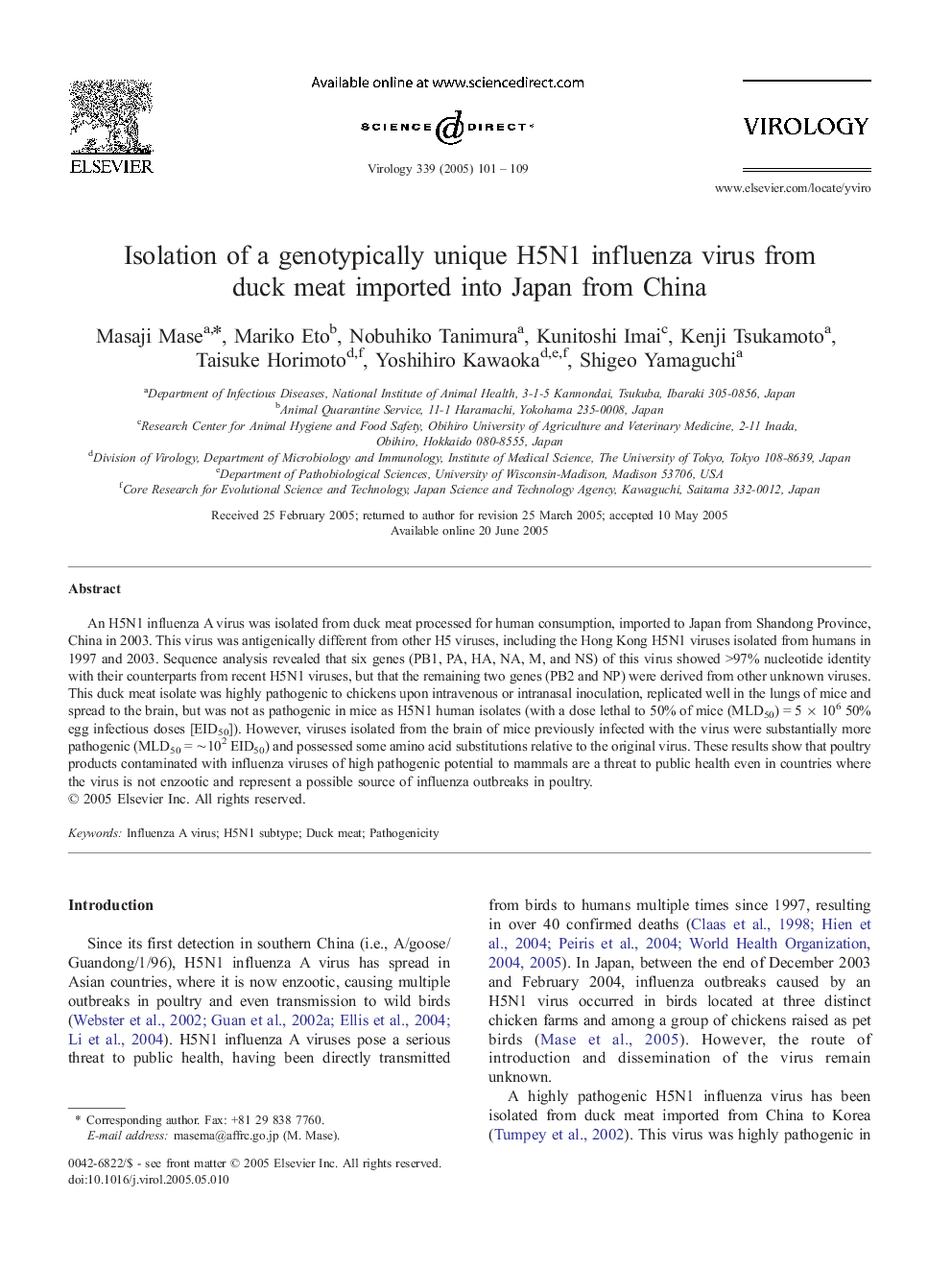| Article ID | Journal | Published Year | Pages | File Type |
|---|---|---|---|---|
| 9286838 | Virology | 2005 | 9 Pages |
Abstract
An H5N1 influenza A virus was isolated from duck meat processed for human consumption, imported to Japan from Shandong Province, China in 2003. This virus was antigenically different from other H5 viruses, including the Hong Kong H5N1 viruses isolated from humans in 1997 and 2003. Sequence analysis revealed that six genes (PB1, PA, HA, NA, M, and NS) of this virus showed >Â 97% nucleotide identity with their counterparts from recent H5N1 viruses, but that the remaining two genes (PB2 and NP) were derived from other unknown viruses. This duck meat isolate was highly pathogenic to chickens upon intravenous or intranasal inoculation, replicated well in the lungs of mice and spread to the brain, but was not as pathogenic in mice as H5N1 human isolates (with a dose lethal to 50% of mice (MLD50)Â =Â 5Â ÃÂ 106 50% egg infectious doses [EID50]). However, viruses isolated from the brain of mice previously infected with the virus were substantially more pathogenic (MLD50Â =Â â¼102 EID50) and possessed some amino acid substitutions relative to the original virus. These results show that poultry products contaminated with influenza viruses of high pathogenic potential to mammals are a threat to public health even in countries where the virus is not enzootic and represent a possible source of influenza outbreaks in poultry.
Related Topics
Life Sciences
Immunology and Microbiology
Virology
Authors
Masaji Mase, Mariko Eto, Nobuhiko Tanimura, Kunitoshi Imai, Kenji Tsukamoto, Taisuke Horimoto, Yoshihiro Kawaoka, Shigeo Yamaguchi,
